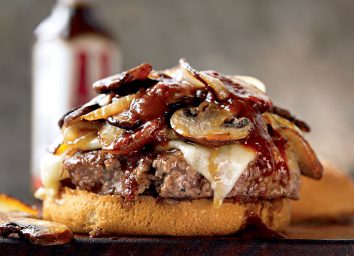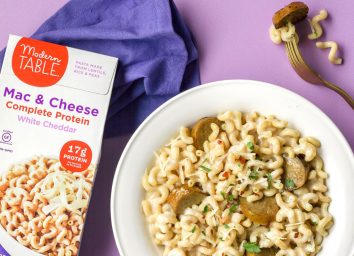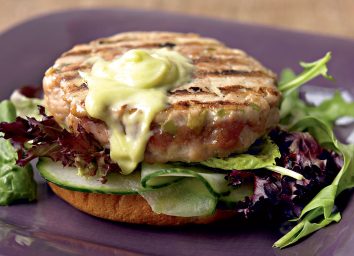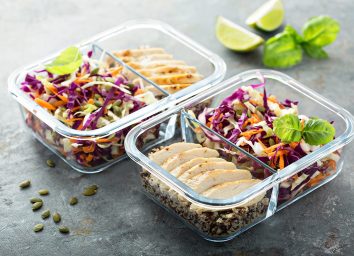17 Major Burger Mistakes You're Making
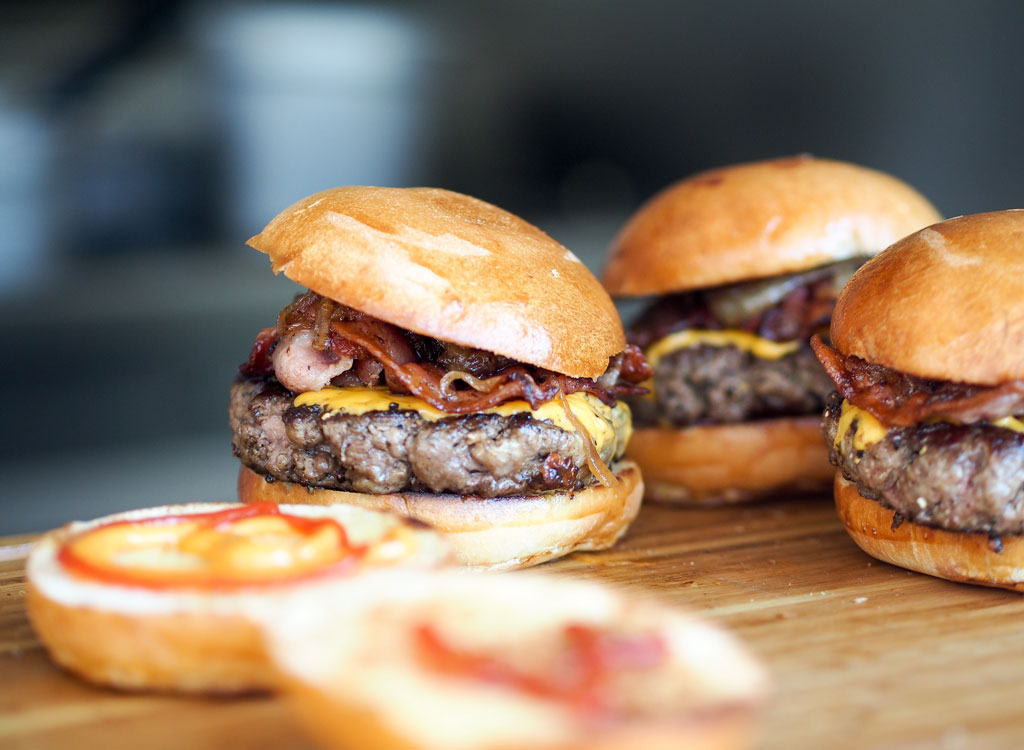
Making hamburgers seems like something that should be simple—how hard can it be to cook those beefy discs? Yet somehow, nailing the perfect burger can elude even the most seasoned home cook. Make the patty too thick and you risk biting into a raw mess. Leave it on the heat for too long, and it'll end up dry. And a slew of other things can go wrong, too.
But fear not! We're here to help you avoid these common burger mistakes so that you can make at-home burgers that are just as delicious as the ones from your favorite restaurant. With these burger tricks on hand, you'll have the best-ever cookout this summer. And for more cooking tips and recipe ideas, sign up for our newsletter to get daily recipes and food news in your inbox!
What's the best burger trick for home chefs?
The secret to making juicy burgers at home is all in the meat. You'll want to form the patties by hand, rather than buying pre-formed patties. (Bonus points if you grind the meat yourself, too!) The other big burger trick you'll want to abide by is letting your meat come to room temperature before throwing it on the grill. If the meat is still cold from the fridge, it won't cook as evenly.
What else do you need to know to make juicy burgers? We asked two chefs to share the most common burger mistakes people make and how to avoid them. And we're not gonna leave you in the dark: You'll also find easy solutions to all your grilling woes, including how to build a better burger.
And for more, don't miss these 15 Classic American Desserts That Deserve a Comeback.
Mistake: Buying pre-formed patties.
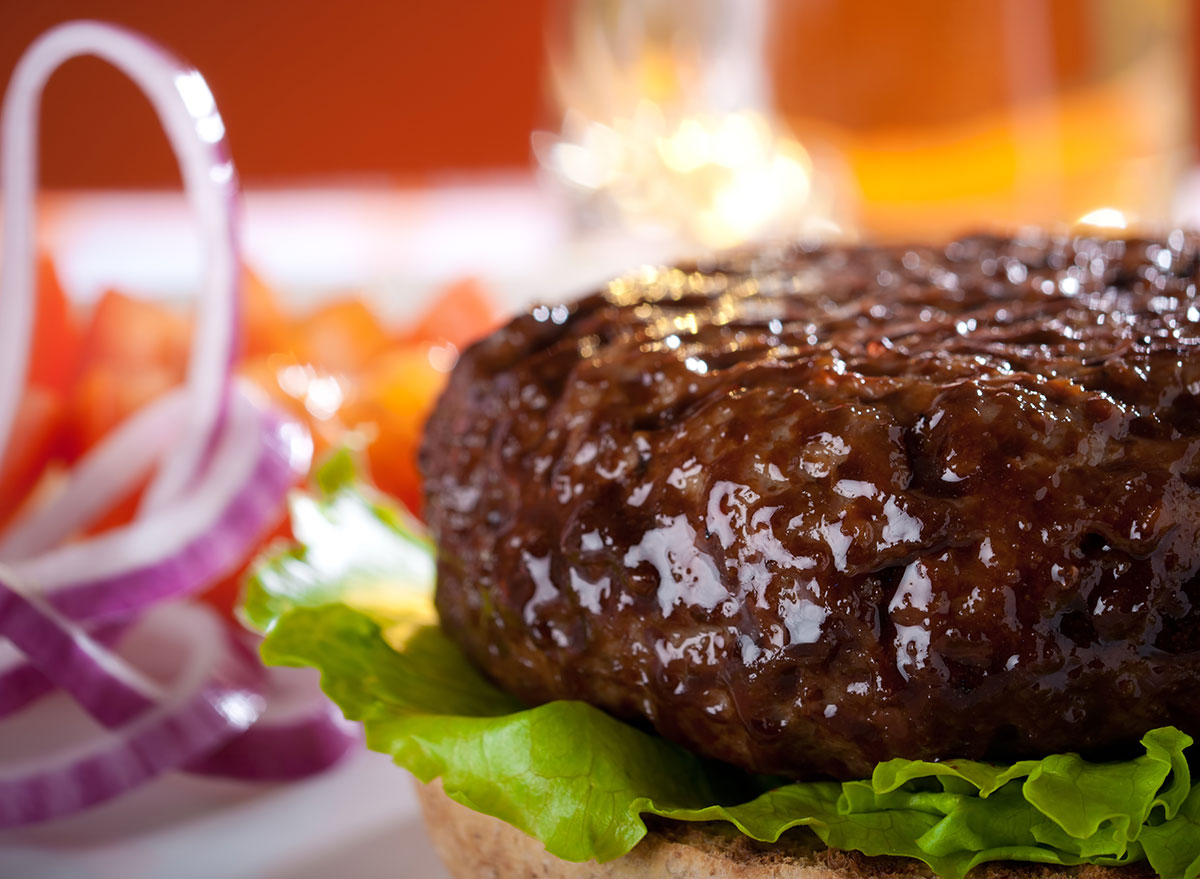
Those pre-made patties at the store may look tempting as a shortcut, but you're going to want to pump the brake on buying a package. They aren't necessarily made with the highest quality meat, and you'll be leaving the seasoning up to chance.
How to fix it: To make a burger with the right amount of fat and flavor, Cory Harwell, chef of Carson's Kitchen in Alpharetta, Georgia, suggests a blend of beef. "I recommend a ground beef mixture from your local butcher that is 75% ground chuck, 15% ground brisket, and 10% ground short rib," he says. This ensures a good amount of fat, which translates into more flavor.
And for more cooking tricks, don't miss these 20 Tips for How to Make the Perfect Burger.
Mistake: Cooking with cold meat.
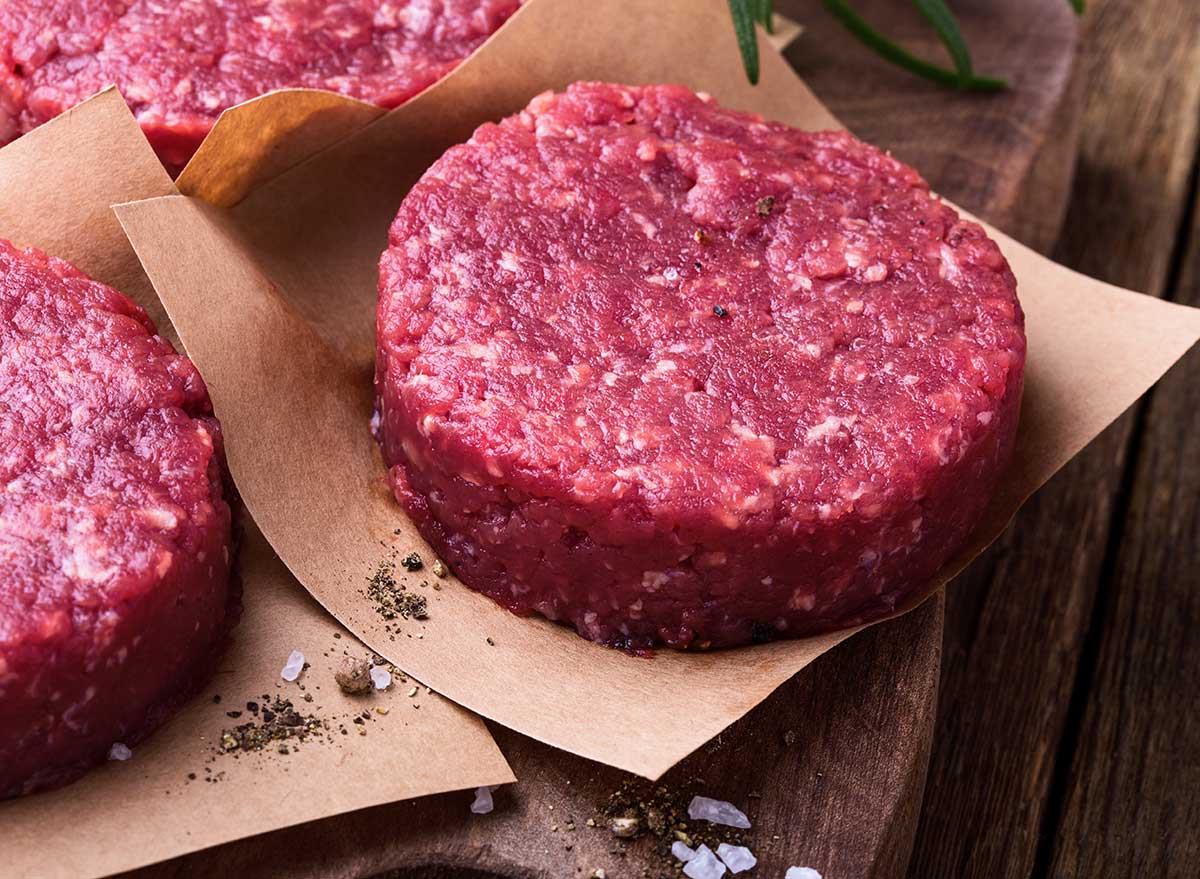
We get it: You're busy and want to get to the cooking. It makes sense that you would want to start cooking your patties straight out of the fridge. But before you throw your patties on the grill or stove, let them come to room temperature.
How to fix it: Be patient and let your meat rest outside of the fridge for a few minutes. "I like to let the meat reach room temperature before cooking," Harwell says. "This ensures there's less of a shock to the meat when placed on a hot surface for cooking." The meat will also cook more evenly. Don't leave them out too long, though—around 15 minutes is all you need.
Mistake: Using a binder.
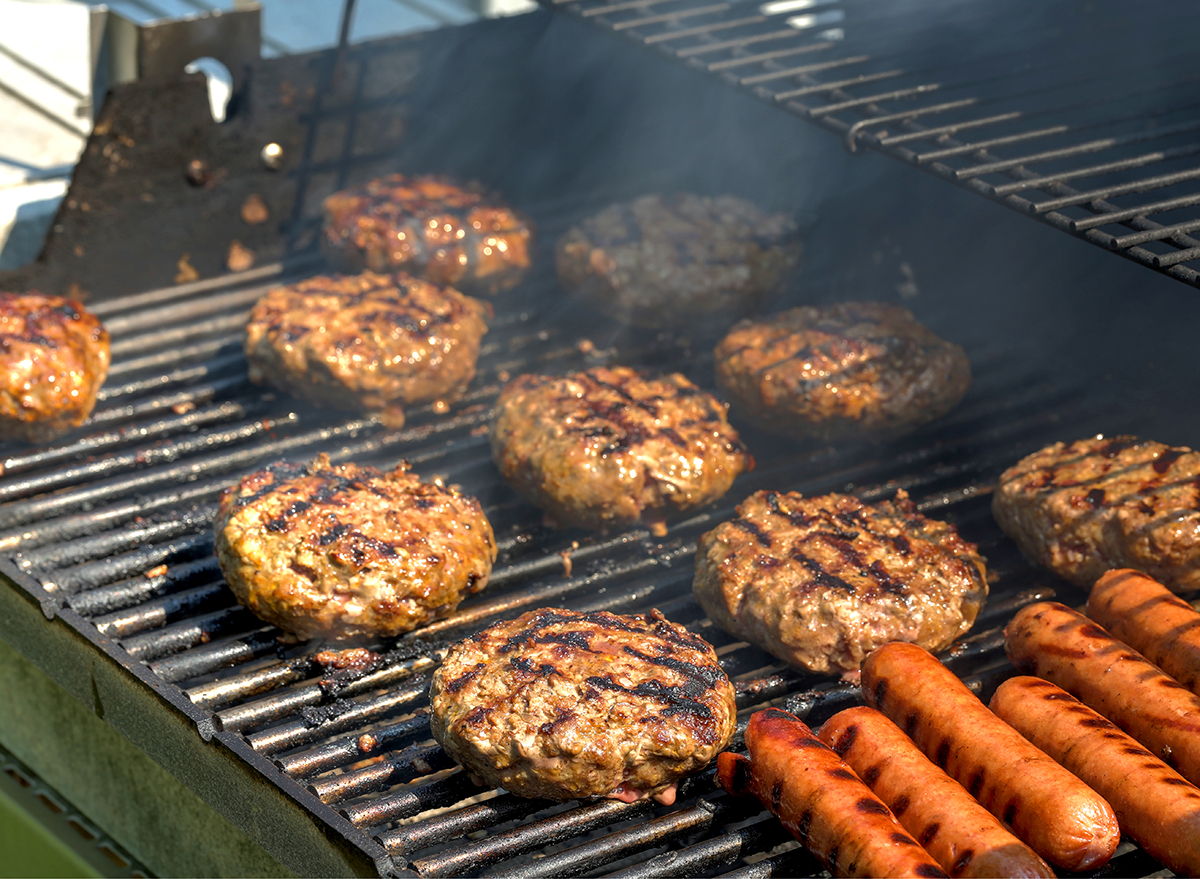
Some people like to mix their burger meat with eggs or breadcrumbs, thinking that it will hold the meat together better. But Harwell is very succinct when it comes to this issue. "Please don't use a binder when making burgers," he says. "That makes it more of a meatloaf than a burger."
How to fix it: Leave the binder behind! All you need to make a burger is beef and seasoning. That's it!
Mistake: Under-seasoning the meat.
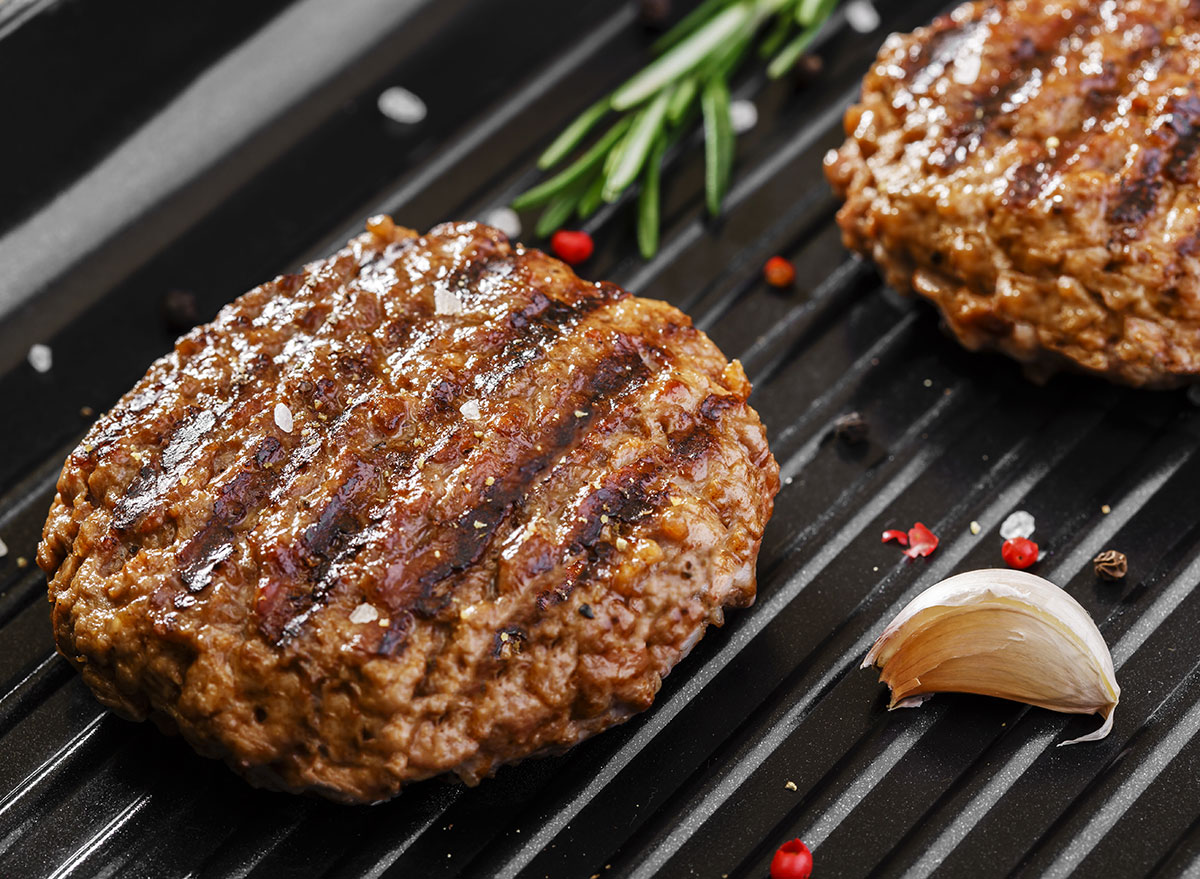
No one wants to bite into a burger that tastes bland. Don't hold back when it comes to seasoning your patties. Not only do you need to make sure you use enough salt and pepper, but you also need to make sure you use those condiments correctly.
How to fix it: Season liberally—and only after you've formed the patties. "When seasoning the meat, make sure to form the patty before you add Morton Coarse Kosher Salt and black pepper," says Derek Wolf, fire cooking enthusiast and owner of Over the Fire Cooking. "Salt extracts the moisture from the meat and leaves you with a dry patty. Adding the salt right before you cook can help guarantee you have a nice, juicy burger that is full of flavor."
"Most people under-season their patties. Be liberal with the salt and pepper, and season from high above the patty so you get even coverage," says Harwell. We're not suggesting that you go full-on Salt Bae while seasoning your hamburgers, but sprinkling the seasoning on from high above is a helpful technique that will get you delicious tasting burgers.
Mistake: Using table salt.
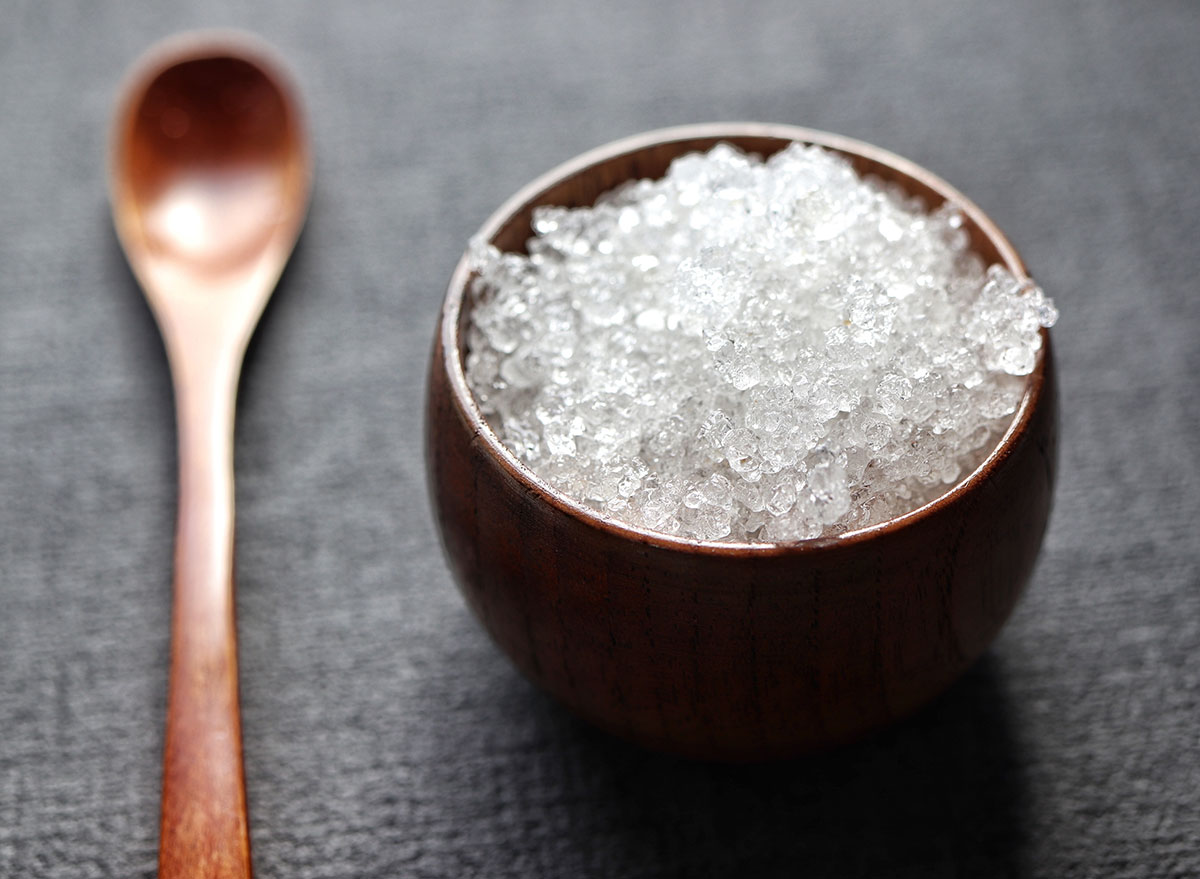
It's natural to sprinkle a hearty pinch of table salt onto ground beef when you're making burgers. But Dino DeBell, executive chef and partner of Allen Burger Venture in Buffalo, New York, says that using table salt instead of kosher salt when making burgers is a big mistake.
Why should you use kosher salt? The flakes are bigger, which means there's a higher density of flavor added to the meat. Table salt's flakes, on the other hand, are smaller and dissolve pretty quickly. Those big kosher salt flakes are great for drawing out the moisture in the meat, making those burger patties even juicier.
How to fix it: Invest in some quality kosher salt and season those patties to perfection.
Mistake: Forming uneven patties.
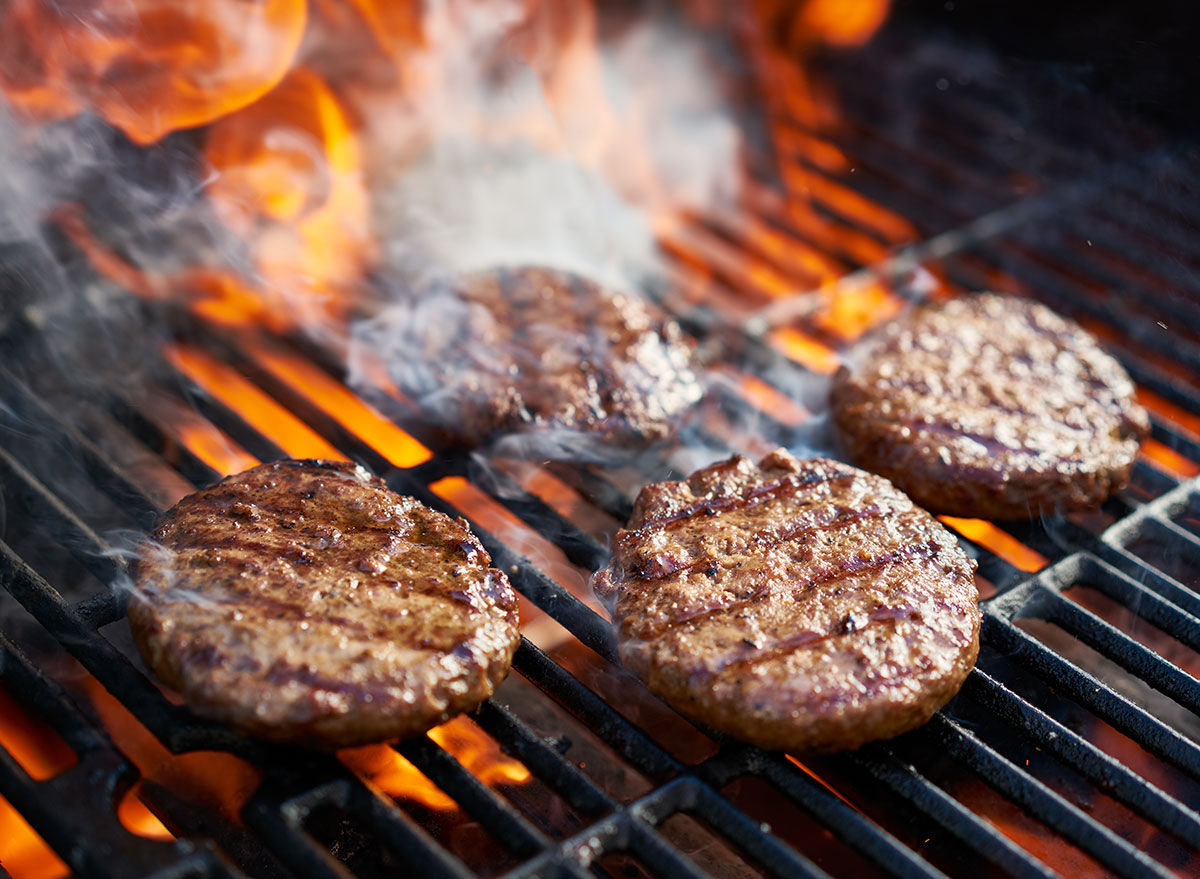
Did you burn your burgers while cooking them? The culprit is likely uneven thickness. While the shape of the patty doesn't matter, the thickness does.
"You really want to make sure the patty is a uniform, even thickness, or it's not going to cook properly, which can lead to a burnt outside and undercooked inside," says DeBell.
How to fix it: "Flatten the patties by pressing them flat using a burger press," says Wolf. "If you don't have a burger press, then try pressing together two plates or two cutting boards to get that flat burger form. Fun tip: If you are looking to double-stack burgers, make sure to have thin patties, or else you will have a very tall burger!"
You can also try this tip from Harwell: Put a little thumbprint in the middle of the patty once it's formed, and it will prevent the patties from balling up during the cooking process.
Mistake: Not making your patty wide enough.
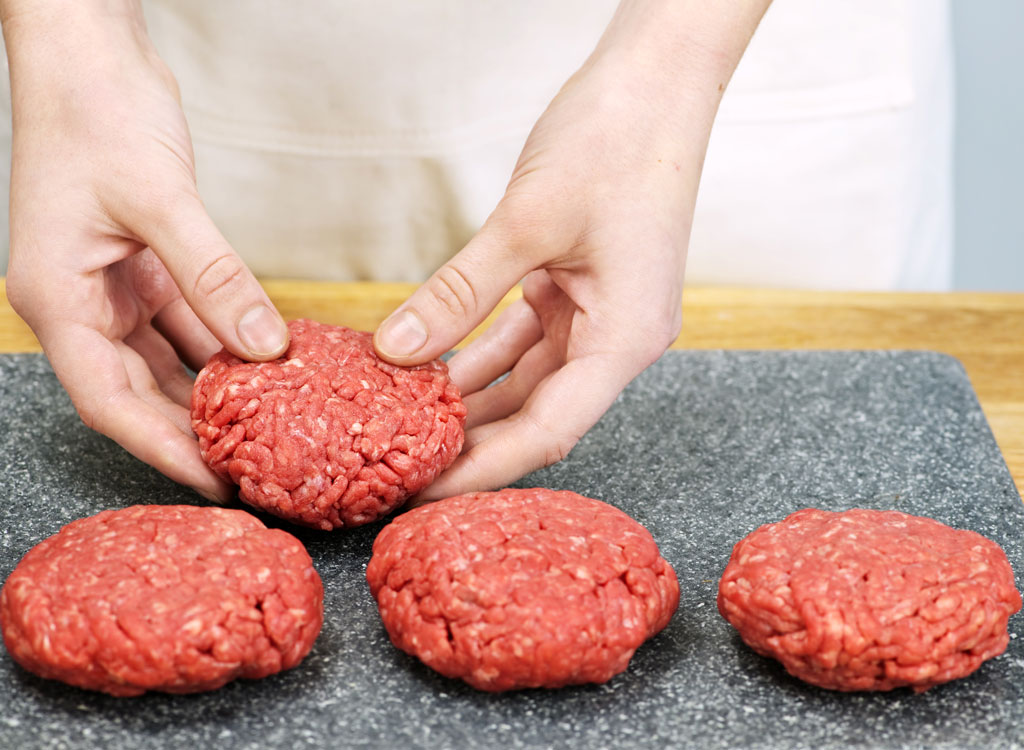
When making burgers, it's important to remember that the meat loses volume while cooking. That means that when you're shaping your patty, you need to account for shrinkage and make patties that seem bigger than they need to be.
How to fix it: Harwell suggests combating patty shrinkage by making your patty about one inch wider than the bun. This way, when the burger cooks down, it's still perfect for whatever bun you're putting it on.
Mistake: Not cooking on a flat surface.
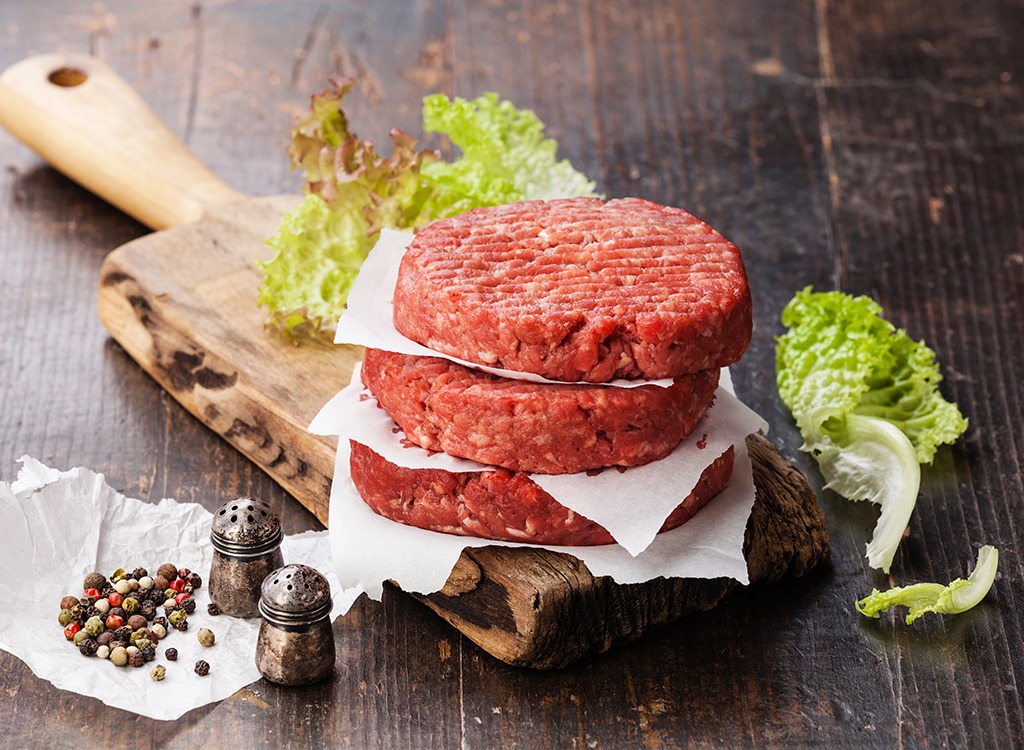
Cooking burgers on a backyard grill is iconic, but it's not necessarily the best way. Both Harwell and DeBell prefer cooking their burgers on a flat surface at home, specifically a cast-iron skillet. "I think a high-heat sear, taking advantage of the Maillard reaction [caramelization], is the best way to go," says Harwell. DeBell says to use a hearty amount of butter on the skillet to help with sticking, and of course, flavor.
How to fix it: Don't be afraid to cook burgers indoors! "Burgers are simple to make on a stovetop, too—with the right seasonings and toppings," says Claudia Sidoti, head chef & recipe developer at HelloFresh. "A little seasoning can go a long way to bring out the best flavors."
"Drizzle olive oil into a frying pan on high heat," Sidoti says, adding that cast-iron is your best bet. "Once it gets nice and hot, and the heat is distributed evenly, it'll deliver on those grill marks you're hoping for."
Mistake: Using the wrong buns.
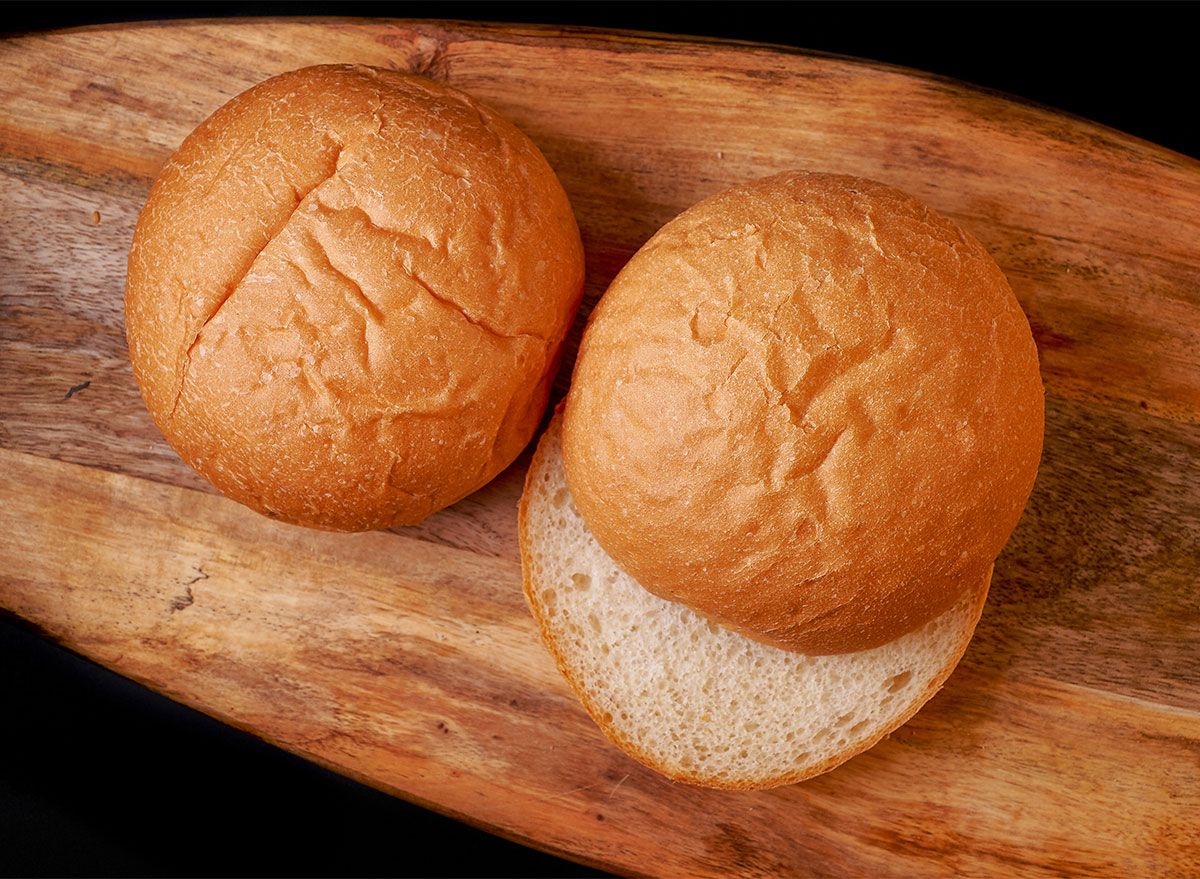
After going through the trouble of making hamburgers, it can be tempting to throw them on just any old buns. But that's a mistake, as buns play an important role. So don't grab just any package of buns at the grocery store!
How to fix it: Soft, pillowy buns are the best, according to Harwell. They taste great, plus they're nice to chew into when taking a bite out of your burger. Think potato or egg rolls, which have the right texture for your burgers.
"The biggest reason people see issues with burgers holding up is because they didn't pick a great bun that fit the burger," DeBell says. "The wrong size, a low-quality bread, etc. That's why you buy good buns: to hold up to the burger and all the ingredients."
And for more tips, here's How to Grill Burgers Perfectly.
Mistake: Overcooking the burgers.
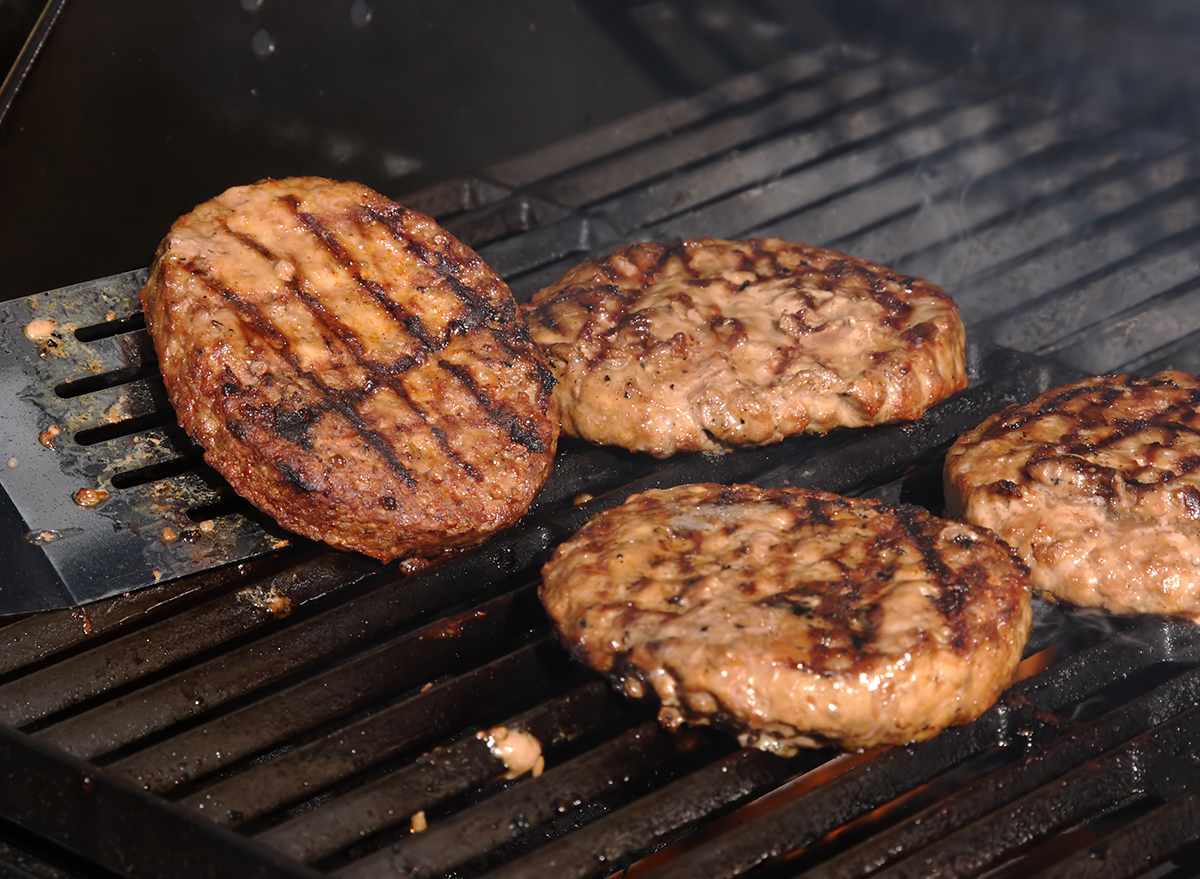
Food keeps cooking once it's taken off the heat, a process known as residual cooking. It's easy to forget about during the cooking process, but keeping it in mind can make a huge difference with your burgers.
"It may look like it's the temperature you want now, but then it'll rest and keep cooking, and you can end up with a burger that's more overcooked than you'd prefer," says DeBell.
How to fix it: "Allow the beef patty to rest at least a couple of minutes after cooking. Some blood and juices will drip away, thus keeping the bun from getting soggy," says Fabrice Poigin, culinary director at King's Fish House.
Harwell suggests using a thermometer and to pull the meat when it's five to 10 degrees before the desired temperature. When it is, pull it off the cooking surface and let it finish cooking and come to rest.
"Resting is very important when grilling a burger. Like [with] most meats, giving your burger the chance to rest allows all of the deliciously mouthwatering juices to collect and re-distribute throughout the patty, for a real concentrated juicy flavor," says Patrick Ochs, corporate executive chef for INK Entertainment USA. "The smaller the burger patty is, the less time that's needed to rest. For larger patties, you should allow the burger to rest for up to 6-10 minutes."
Mistake: Not constructing your burger properly.
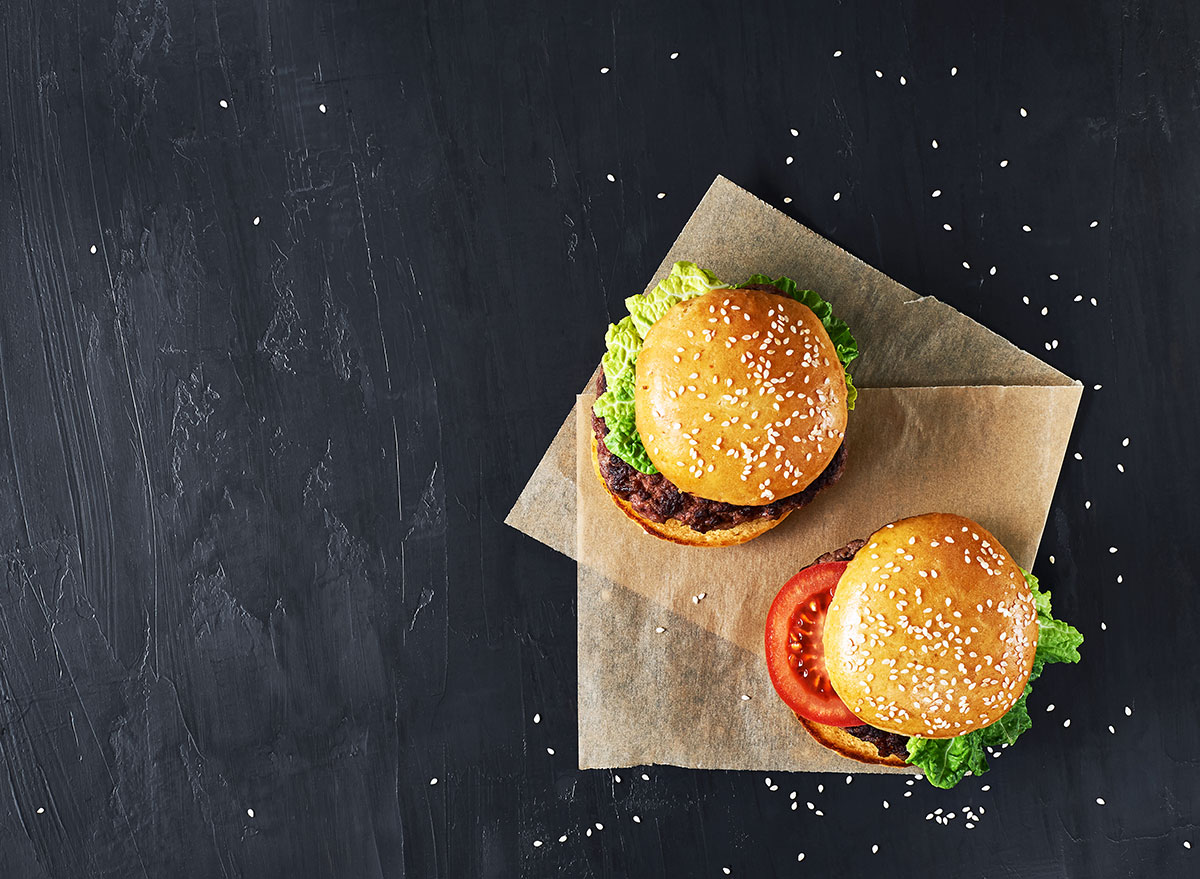
There's no wrong way to build your burger, but when it comes time to construct your burgers, it's important to put the lettuce down on the bun before the patty. The lettuce acts as a barrier between the bun and the patty (and the other ingredients), keeping it from getting too soggy.
How to fix it: "I use iceberg lettuce and place it facing up on the bottom bun," Harwell says. "That way, the lettuce cup catches some of the natural drippings. I put veggies under the patty and cheese on top."
Mistake: Overhandling the meat.
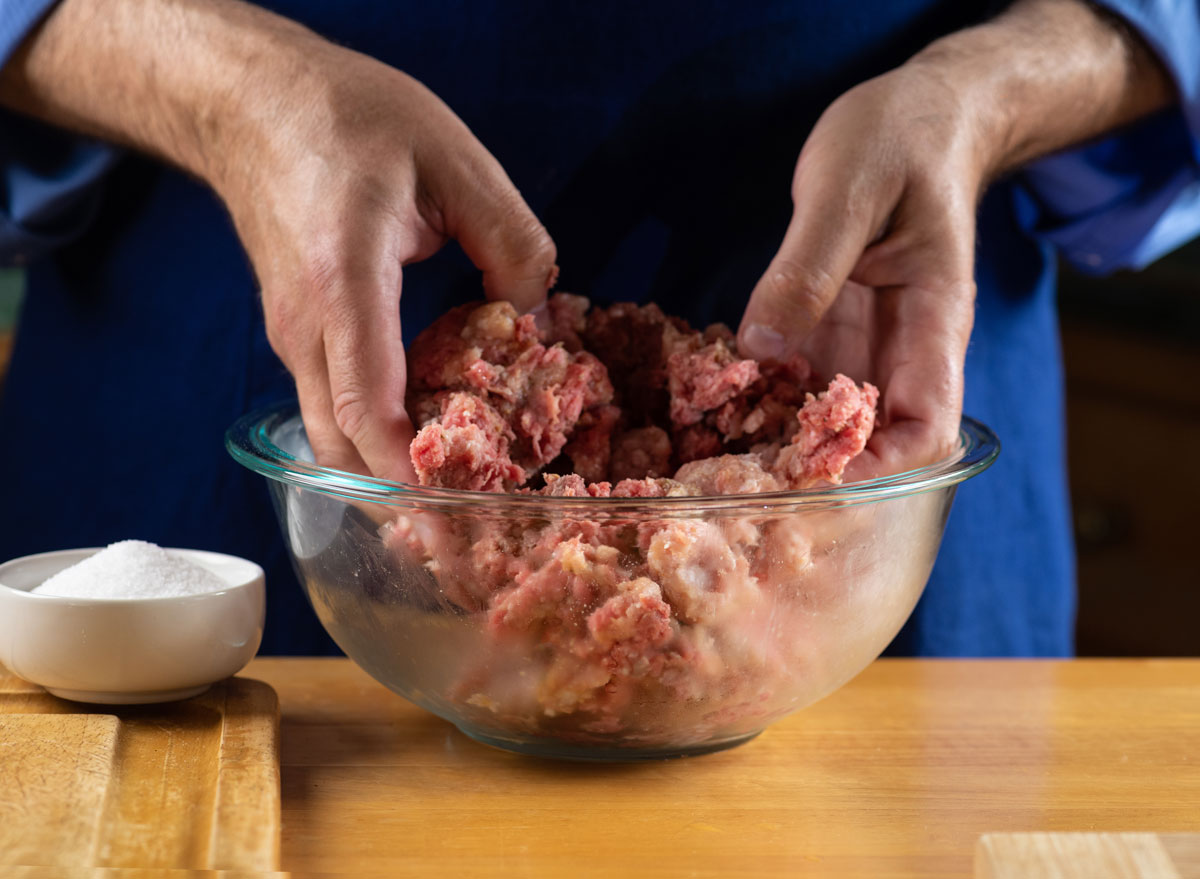
When forming your patties, you need to be gentle with the ground beef. Packing the meat together too tightly to form the patty will result in a burger that's tough to chew. For a juicy, tender burger, gently bring the meat together, keeping it somewhat loose. It may seem counterintuitive, but it'll be worth it when you sink your teeth into the perfect burger.
How to fix it: Don't need to put the meat in a bowl to add seasoning. Don't mix the seasoning into the burger mixture—just add it on top before cooking your patties.
Mistake: Overloading your burger.
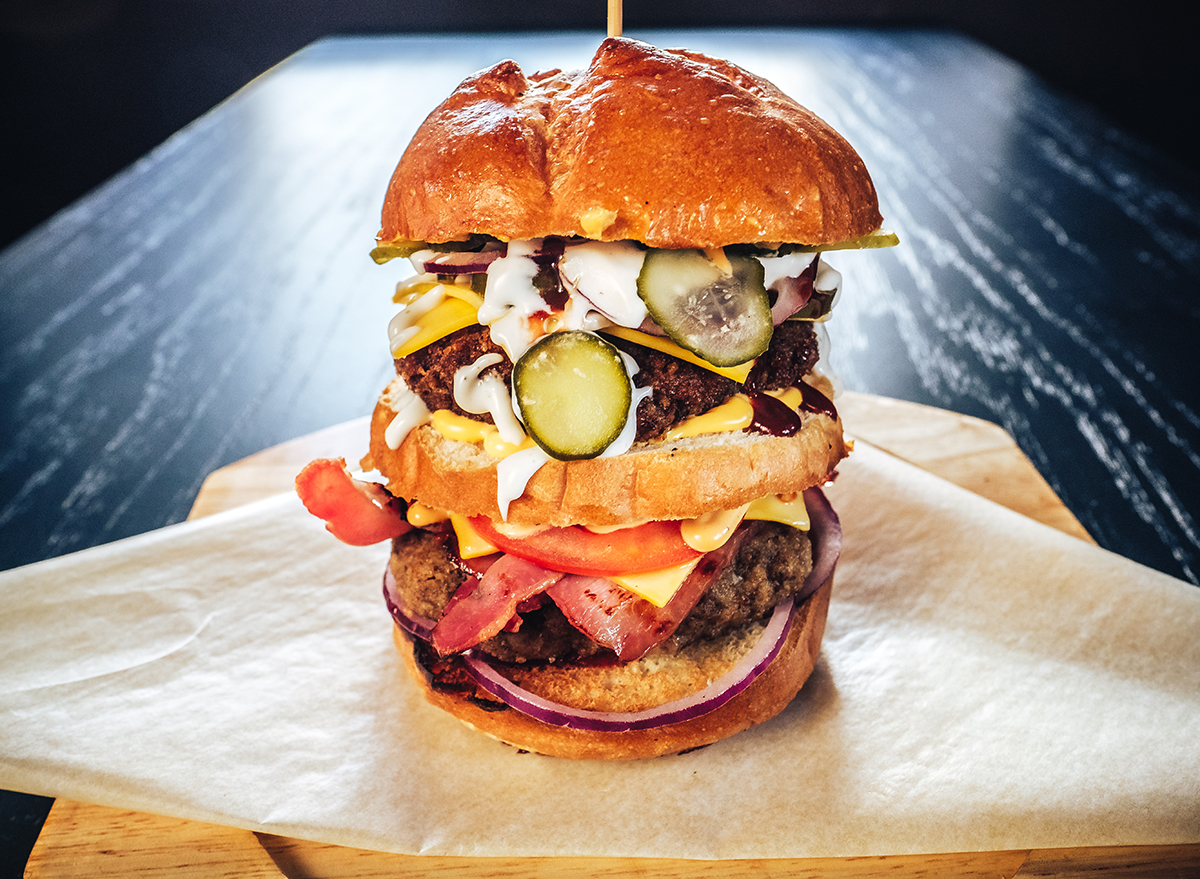
There's no wrong way to adorn your burger, but try not to go overboard. "The issue is making sure you don't get too gimmicky… try and keep it authentic," DeBell says. "Stick to good quality ingredients and you won't need a ton of condiments—a good quality beef and bun will go a long way."
How to fix it: If you want your burger to shine, pick a couple of toppings and let the burger do the rest.
"Balance is key to any burger," says Ochs. "Based on whichever condiments, produce, and meat you decide to put in your burger, you must remember to keep a balanced ratio of all ingredients. I tend to make my burgers with the following ratio: 50 percent bun, 30 percent patty, 10 percent produce, five percent cheese, five percent sauce. Burgers are meant to be simple and fresh. You want to be able to taste all of your ingredients in every bite."
Mistake: Undercooking or overcooking your burger.
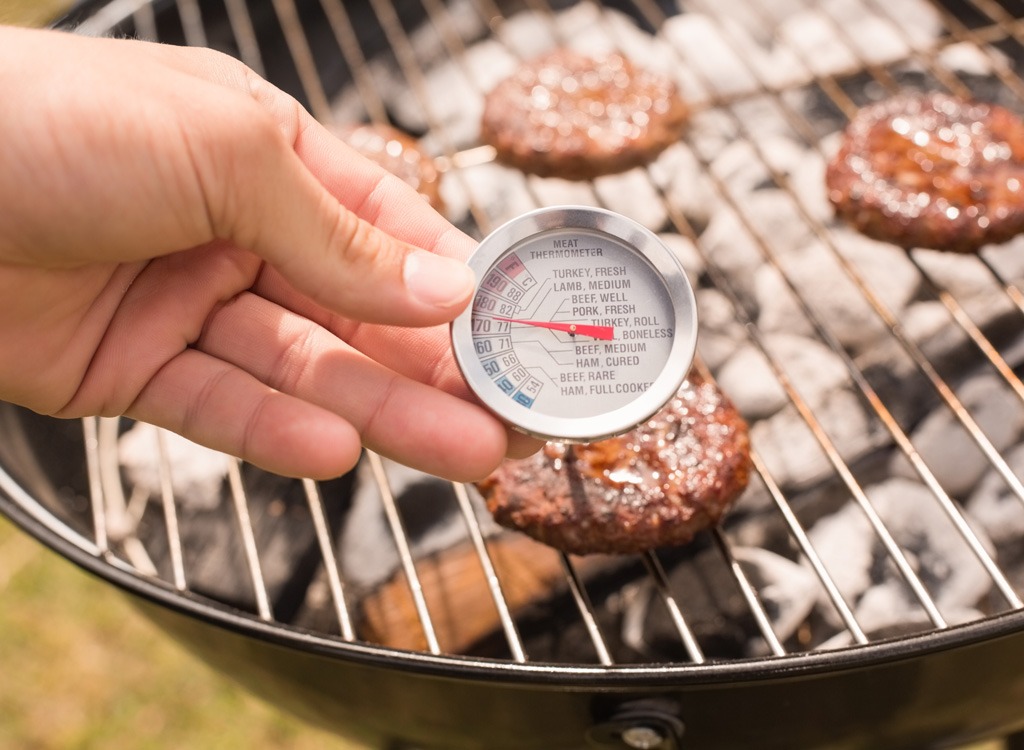
Cooking burgers can be dicey. If you don't cook the burger long enough, it'll be raw inside, which puts you at risk for illness-causing bacteria. If you overcook it, you end up with a tough, dry mess. No one wants to bite into a hockey puck!
How to fix it: The best thing to do to ensure a properly cooked burger is to buy an internal thermometer. The USDA recommends an internal temperature of 160 degrees Fahrenheit for ground beef.
An internal temperature of 125 degrees Fahrenheit denotes rare, while 130 degrees Fahrenheit will render a medium-rare burger. Prefer your meat more done? For medium, cook until the meat reaches 140 degrees Fahrenheit; for medium-well, aim for 150 degrees Fahrenheit; and for well-done, leave the patty on the grill or pan until it reaches 165 degrees Fahrenheit.
Mistake: Pressing the burger while cooking.
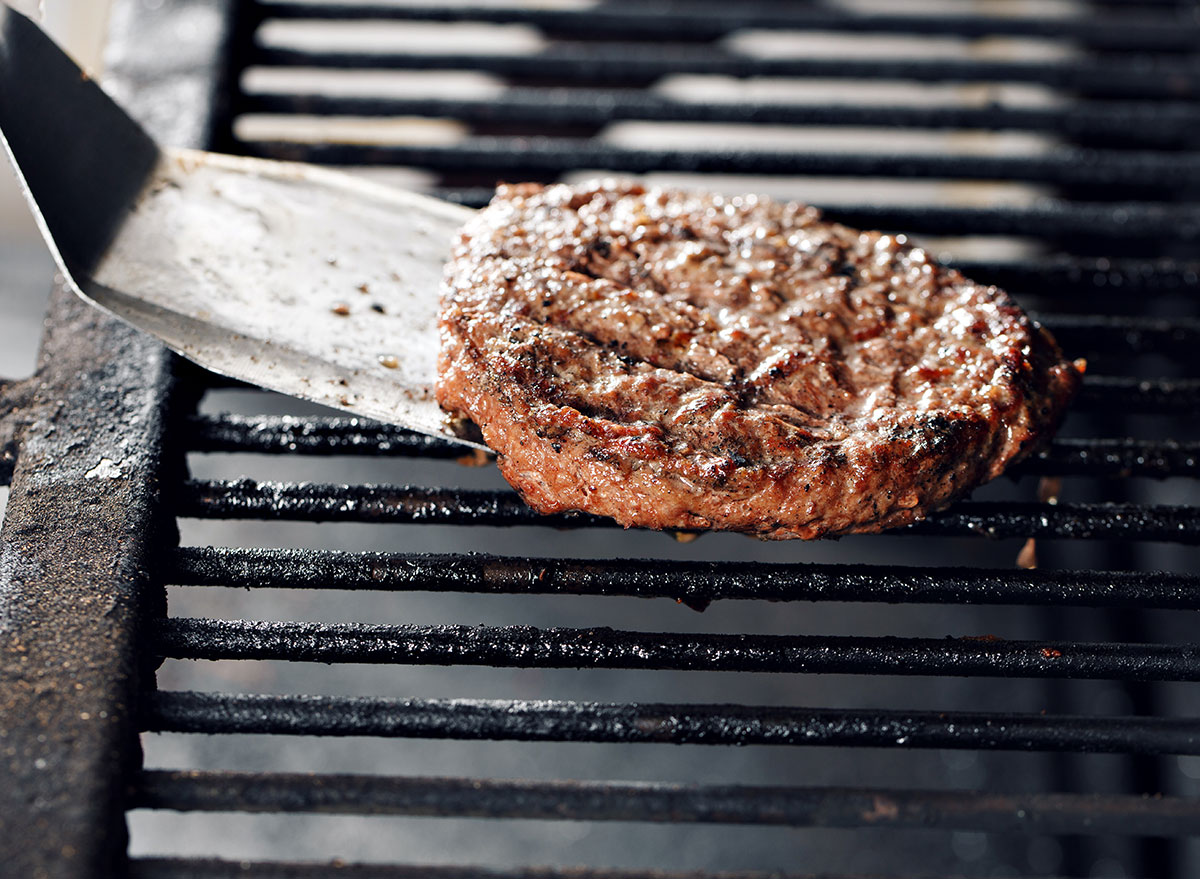
If you've seen people pressing down on their burgers while cooking on television, don't try it at home. By pressing down on your burgers, you're squeezing out their juices. You may feel like pressing down on your burger will expedite how fast it will cook. However, Daniel Stramm, executive chef at Wolfgang Puck in Downtown Summerlin, Las Vegas, warns against it. "This lets all of the flavors you developed through seasoning drip right down into your coals, causing a spark, which in return will put a carbon taste into your burger," he says.
How to fix it: To maintain that juiciness, simply place the burgers on the cooking surface and flip them once during the cooking process. And be sure to avoid flipping too early—that's how burgers get stuck to the grill.
"Resist the urge to flip or poke and prod at your patty as it cooks. Doing so can remove the moisture from the meat," says Chef Tamra Scroggins, director of food culture at Sizzler. "At most, you should cook your burger for at least three to four minutes on each side, depending on the doneness you're aiming for."
And for more, don't miss these 7 Tips on How to Make Burgers.
Mistake: Not cleaning your grill before cooking.
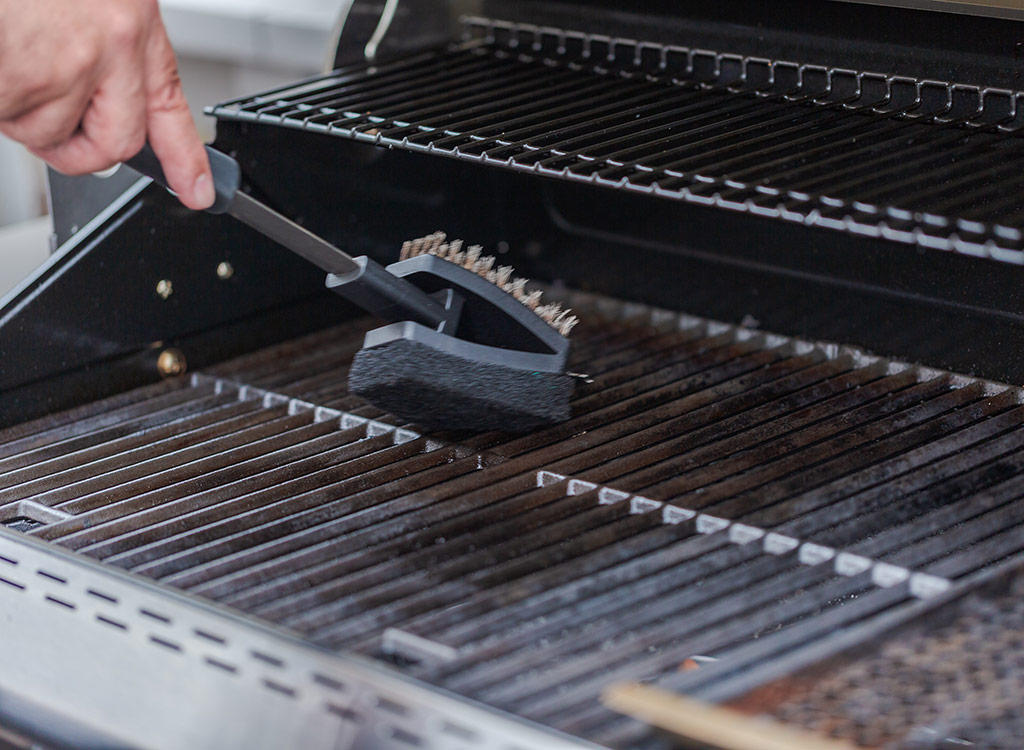
"Nothing is worse than burgers sticking to the grill grate when you try to flip them," Wolf says. "Most people think that burgers are so juicy that they will release from the grill very easily. This is not always the case."
How to fix it: "Make sure to clean your grill grate before cooking," Wolf says. "Preheat the grill so that the heat loosens some of the previous residues. Take a grill scraper and brush off as much as possible. If the grate is really dirty, then add some oil to the brush and put it onto the grill grate (be careful with oil and fire!). Fun tip: Clean your grill immediately after cooking while it is still hot so that you are ready to start cooking at your next backyard grill out!"
Mistake: Putting meat on the grill before it's hot.
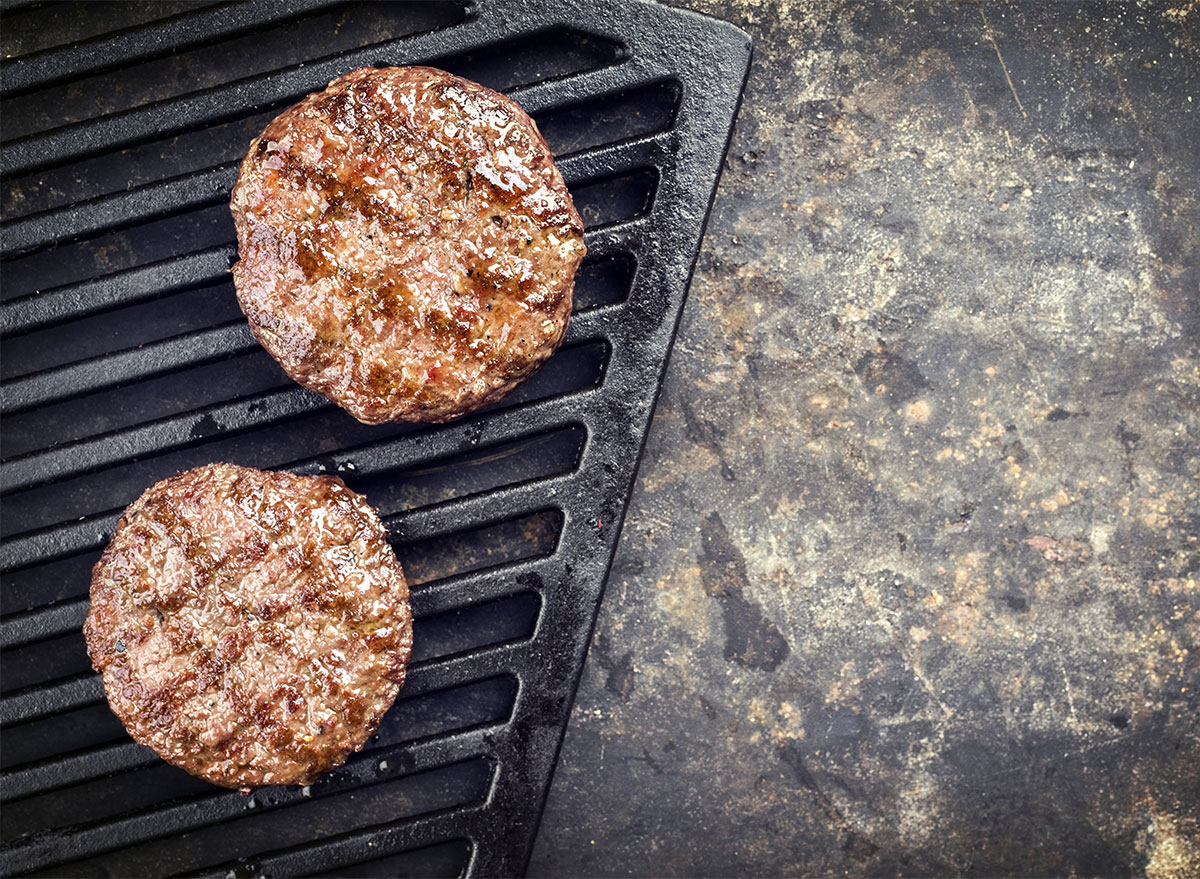
"Ever have a burger that is overcooked on the outside but not right in the inside?" asks Jose Icardi, executive chef and concept creator of Shore Club South Beach's eatery Diez y Seis. "In that case, you may have put your patty on the grill before it was readily hot."
How to fix it: "One of the biggest mistakes people make is putting the patty on the grill before it's reached the right temperature. Just because the fire is going, doesn't mean the grill is ready to use for cooking. You want to make sure the grill or pan is hot before throwing on the patty, and then, of course, let it cook before flipping," Icardi says.
Now that you know these handy burger tricks, you'll be preparing delicious burgers at home in no time.
And for more, check out these 108 most popular sodas ranked by how toxic they are.
